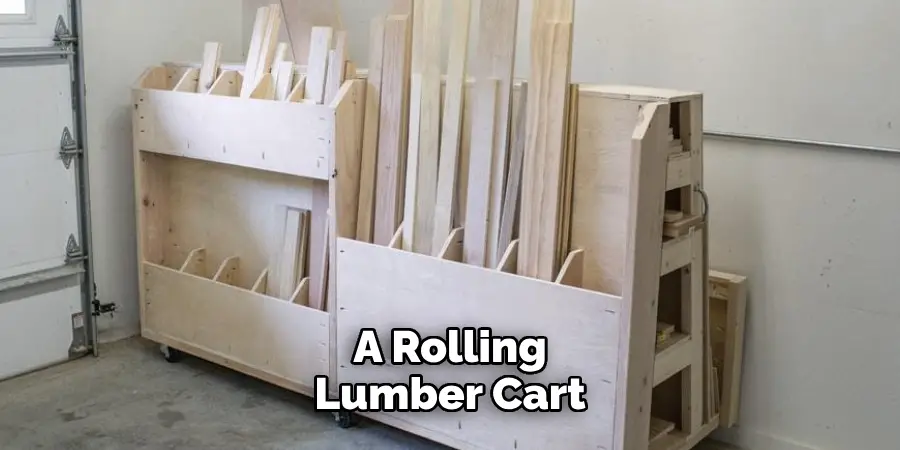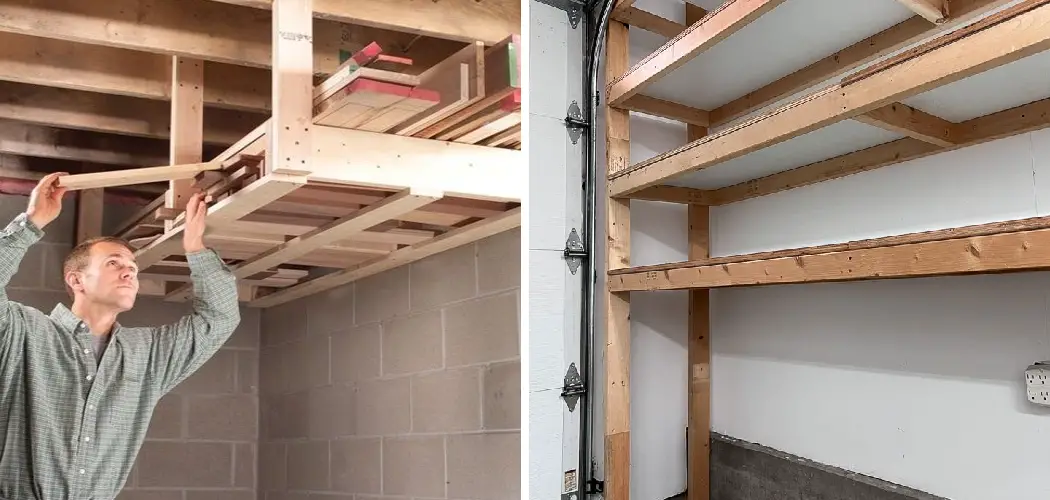Storing wood in your garage can be a practical solution for maintaining an organized and efficient workspace.

Proper storage not only maximizes space but also protects the wood from moisture, pests, and warping. Whether you’re a DIY enthusiast, a woodworker, or just have leftover lumber from a home project, understanding the best practices for wood storage can ensure your materials remain in optimal condition for future use. In this guide, we will explore various methods and tips for how to store wood in garage, creating a convenient and safe environment for your woodworking supplies.
Importance of Proper Wood Storage
Proper wood storage is essential for preserving the quality and longevity of your materials. Wood is a natural material that is susceptible to environmental factors, including humidity and temperature fluctuations, which can lead to swelling, shrinking, or warping.
By storing wood correctly, you can prevent moisture accumulation that may cause mould growth and decay. Additionally, maintaining an organized storage system can help you avoid damage from pests, such as termites or wood-boring beetles. Ultimately, investing time and effort into proper wood storage not only protects your investment but also enhances your efficiency and enjoyment in future projects.
Benefits of Storing Wood in the Garage
Storing wood in the garage offers several compelling advantages that contribute to the overall efficiency of your woodworking projects. Firstly, keeping wood in a controlled indoor environment helps shield it from outdoor elements such as rain, snow, and extreme temperatures, reducing the risk of warping and deterioration.

Additionally, a garage provides easy access to your materials, allowing for quick retrieval when inspiration strikes, which can significantly boost productivity. The enclosed space also minimizes the likelihood of pest infestations, protecting your investment from damage.
Finally, having a designated area for wood storage can help maintain a tidy workspace, making it easier to focus on your craft without the clutter of disorganized materials.
10 Methods How to Store Wood in Garage
1. Use a Wall-Mounted Lumber Rack
A wall-mounted lumber rack is one of the best solutions for storing wood in a garage, particularly if you have long boards or sheets of plywood.
These racks are mounted on the walls and allow you to stack wood horizontally, keeping it off the floor and away from potential moisture. When installing a wall-mounted rack, make sure to anchor it into the wall studs for added support. This method not only saves valuable floor space but also helps prevent the wood from warping by keeping it stored in a horizontal position, away from direct contact with the floor.
2. Utilize Vertical Storage for Shorter Pieces

While long pieces of wood are best stored horizontally, shorter pieces can be stored vertically against a wall. You can install vertical brackets or a vertical storage rack in a corner of your garage to hold shorter boards, scrap pieces, or even dowels. It’s essential to ensure that the vertical rack is stable and won’t topple over, especially if you’re storing large quantities of wood. Vertical storage helps you make the most of limited space and keeps shorter pieces easily accessible for small projects.
3. Stack Wood on Pallets to Keep It Off the Ground
One common mistake when storing wood in a garage is leaving it directly on the floor, where it’s more likely to absorb moisture and rot. To prevent this, stack wood on pallets or raised platforms.
The air circulation underneath the wood helps reduce the risk of moisture accumulation, which can lead to warping or mold growth. This method works well for larger, heavier pieces that don’t fit on racks and allows you to store large quantities of wood without compromising its quality.
4. Organize Wood by Size and Type
When storing wood in a garage, it’s important to organize it by size and type to avoid confusion and make it easier to find what you need for your next project. Group similar types of wood together, such as hardwoods, softwoods, or plywood, and stack them according to their lengths.
You can use labels or dividers to separate different types of wood within the same storage system. This organization ensures that you won’t have to sift through piles of wood to find the exact piece you need, saving you time and effort.
5. Create a Rolling Lumber Cart for Mobility

A rolling lumber cart is an excellent solution if you want flexibility in how you store and access wood in your garage. These carts are typically designed with multiple compartments to hold different sizes of wood and can be moved around the garage as needed.
This method allows you to keep wood mobile and accessible, especially if your garage doubles as a workshop and you need to move materials closer to your workbench. Additionally, the cart can be rolled out of the way when not in use, keeping the floor space clear.
6. Store Wood Horizontally in Shelving Units
For smaller pieces of wood, shelving units provide a practical storage solution. By installing sturdy shelves, you can stack smaller boards or trim pieces horizontally, ensuring they remain organized and easily accessible.
Be sure to use heavy-duty shelving that can support the weight of wood, and avoid overloading the shelves to prevent sagging or warping. Shelves also allow you to store wood off the ground and provide an opportunity to sort the wood by length, thickness, or type for better organization.
7. Keep Wood Away from Garage Doors and Windows
When storing wood in a garage, it’s essential to consider the location within the space. Avoid storing wood near garage doors or windows, where temperature fluctuations and exposure to moisture can be more pronounced.
These areas are often drafty and may let in moisture or humidity, which can lead to warping, splitting, or mold growth. Instead, place wood in a more stable area of the garage where the temperature and humidity levels are more consistent, protecting it from environmental damage.
8. Use PVC Pipe for Dowels and Trim Storage

PVC pipes can be repurposed into a clever storage system for storing thin or long pieces of wood such as dowels, trim, or molding. Attach sections of PVC pipe vertically to a wall or rack, and slide the dowels or trim into the pipes.
This method keeps these smaller pieces neatly contained and prevents them from getting lost or damaged among larger boards. PVC pipes are durable and inexpensive, making this an affordable and space-saving storage solution that is particularly useful for smaller wood pieces that might otherwise clutter your garage.
9. Cover Stored Wood with a Tarp to Protect from Dust and Debris
Even in a garage, wood can accumulate dust, dirt, and debris over time. To prevent this, cover your stored wood with a breathable tarp. This protective covering shields the wood from dust without trapping moisture, which could lead to mold growth. Avoid using plastic sheeting, as it can trap humidity and cause the wood to sweat, leading to damage. By using a breathable tarp, you protect the wood from surface contaminants while still allowing air to circulate and prevent moisture buildup.
10. Monitor Humidity Levels in the Garage
Maintaining the right humidity levels is crucial for preserving wood stored in your garage. Wood is highly sensitive to changes in humidity and can easily warp, crack, or swell if exposed to excessive moisture.
Consider using a hygrometer to monitor the humidity levels in your garage, and aim to keep the levels between 35% and 55%. If your garage tends to be too humid, using a dehumidifier can help maintain stable conditions and protect your wood from damage. Similarly, during dry seasons, a humidifier may help keep the wood from becoming too brittle.
Things to Consider When Storing Wood in Your Garage
- Space Availability
Before deciding on a storage method, assess the available space in your garage. Consider the size of the wood pieces you need to store and choose a storage solution that fits your specific spatial constraints. Efficient use of vertical and horizontal space can help maximize your garage’s storage potential.
- Temperature Fluctuations
Wood is sensitive to temperature changes, which can cause it to expand or contract, leading to potential warping or splitting. It’s important to store your wood in a stable environment where temperatures remain consistent, avoiding areas near heat sources or drafts that can cause extreme fluctuations.
- Type of Wood
Different types of wood require different considerations for storage. For instance, hardwoods and softwoods may have varying sensitivities to moisture and temperature. Be aware of the specific needs of the types of wood you are storing and adjust your storage methods accordingly to ensure their preservation.
Conclusion
Storing wood in a garage requires careful consideration of both the environment and the type of storage solutions you use.
By employing a combination of wall-mounted racks, pallets, vertical storage, and shelving units, you can keep your wood organized and off the ground, protecting it from moisture and environmental damage. Thanks for reading, and we hope this has given you some inspiration on how to store wood in garage!
I am Rick. I grew up helping my dad with his handyman service. I learned a lot from him about how to fix things, and also about how to work hard and take care of business. These days, I’m still into fixing things- only now, I’m doing it for a living.
I’m always looking for new ways to help people grow and develop. That’s why I have created this blog to share all my experience and knowledge so
that I can help people who are interested in DIY repair.

